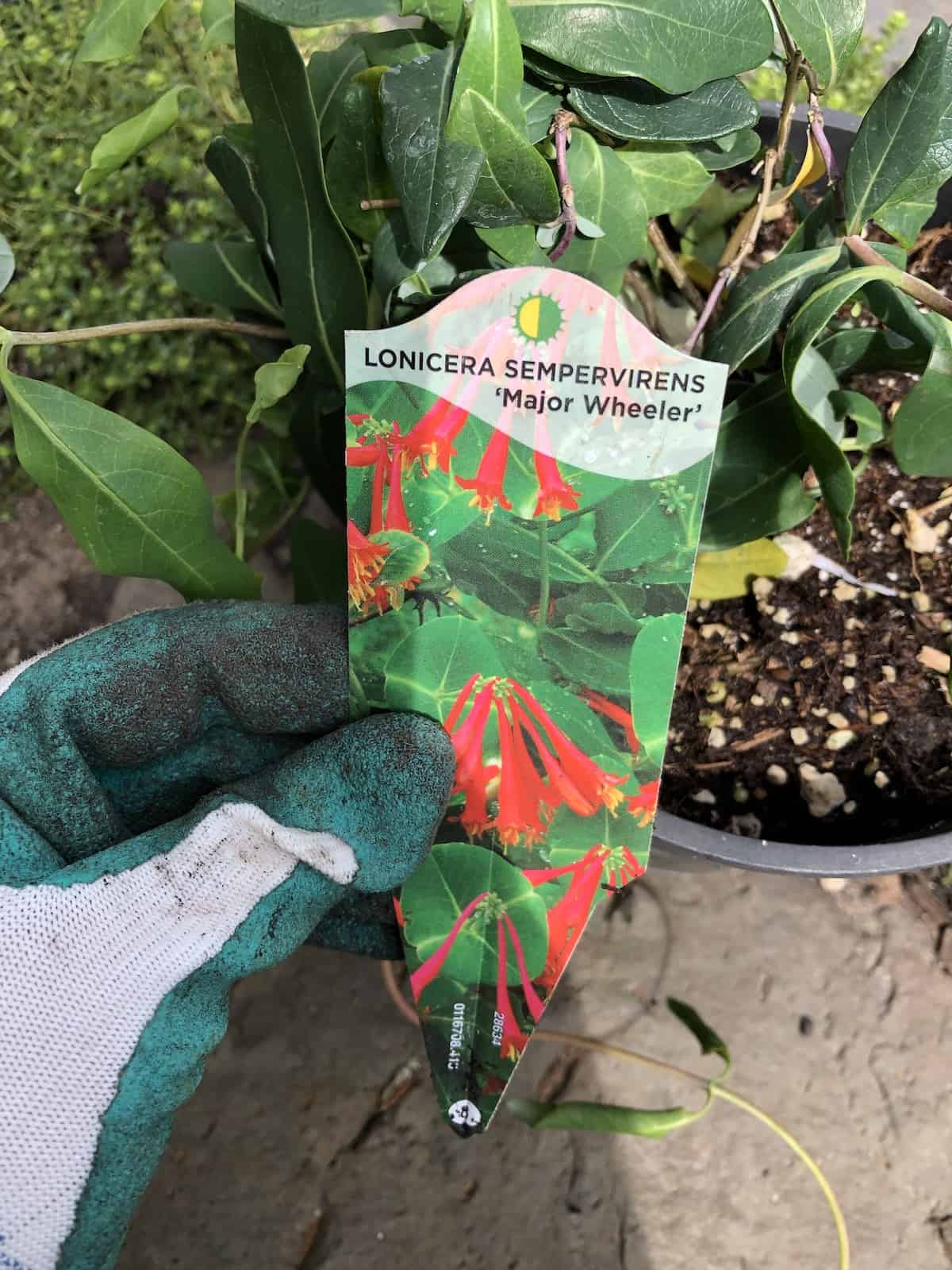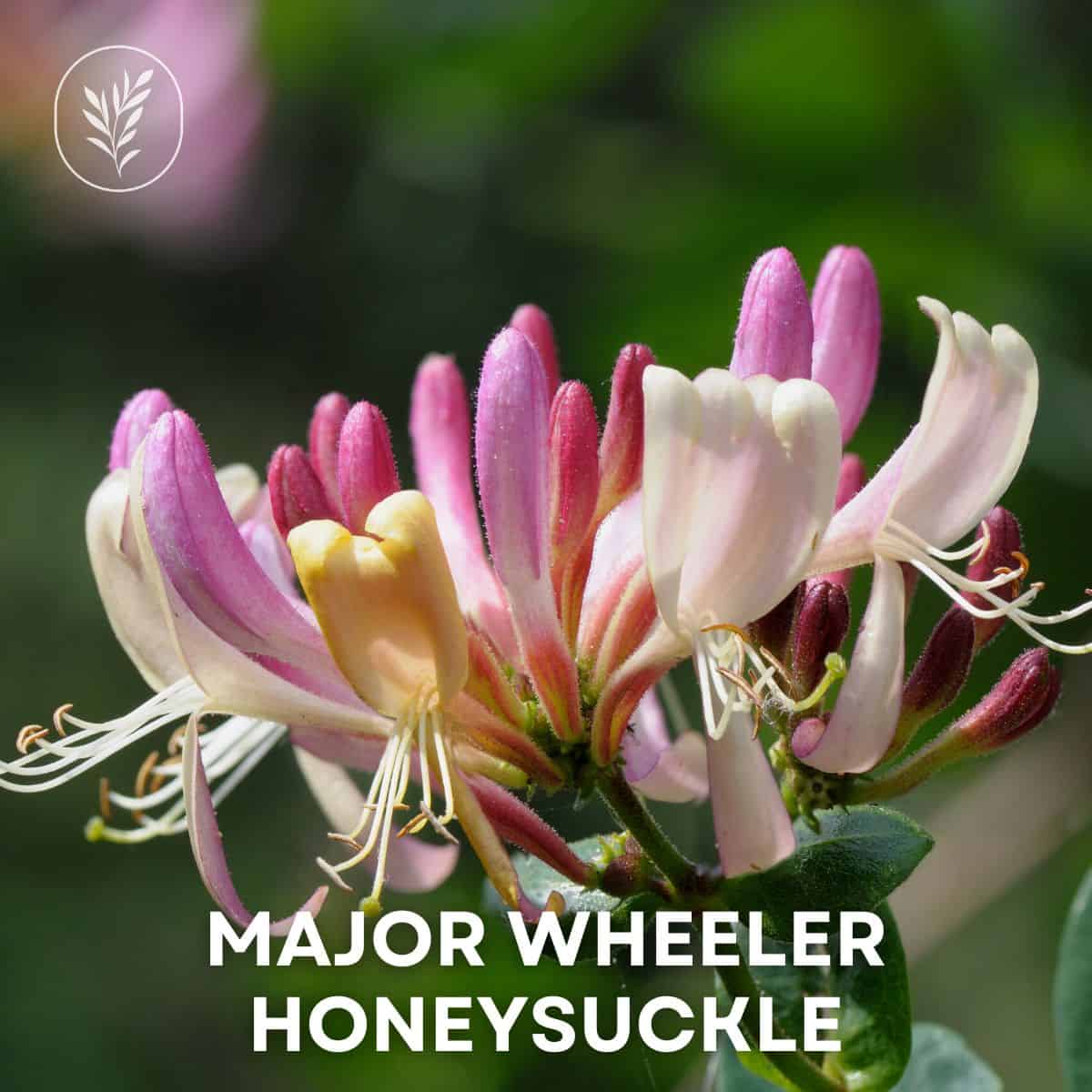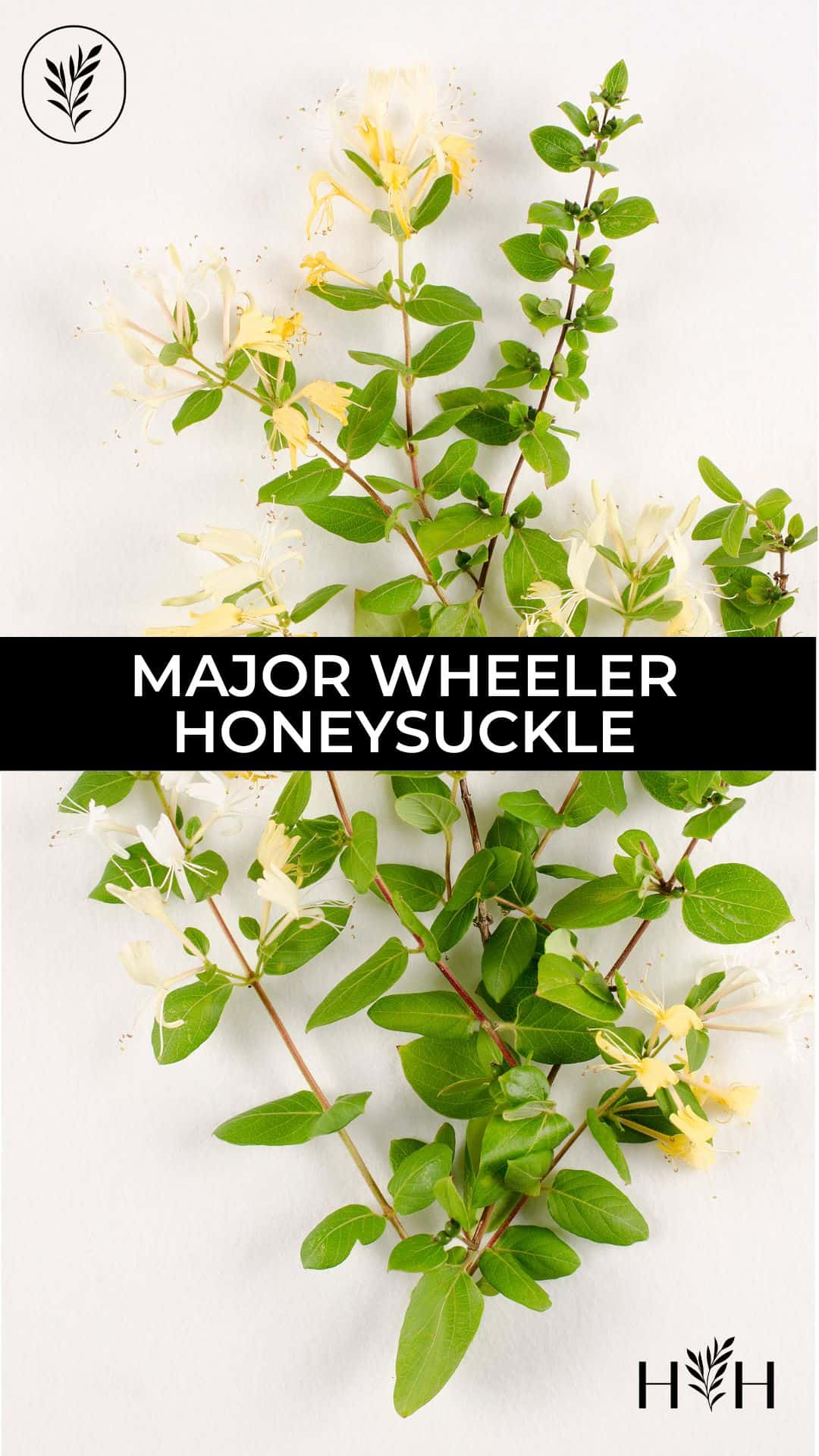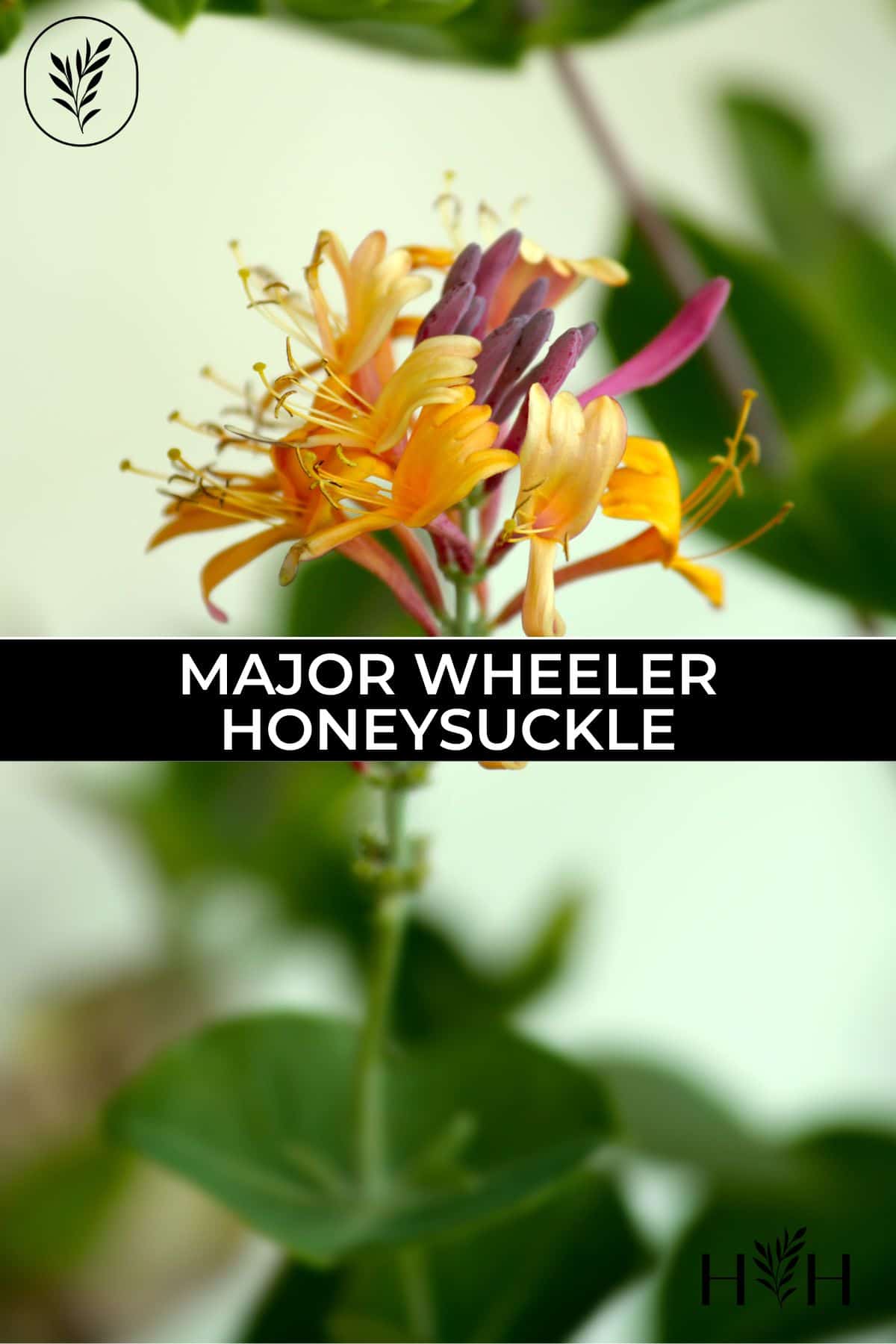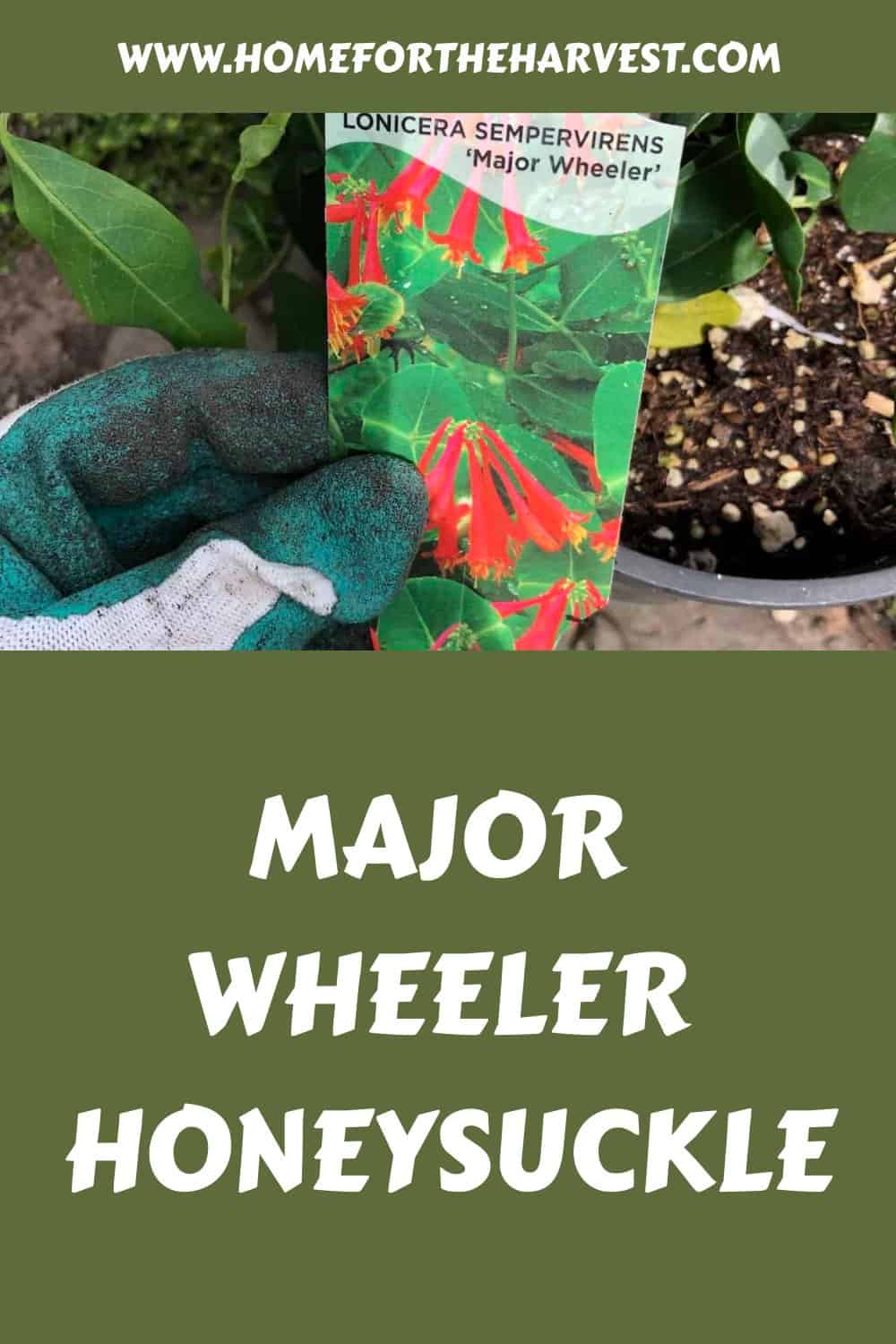Major Wheeler honeysuckle is a variety of coral honeysuckle native to the eastern United States known for its abundant flowers and their ability to attract wildlife – particularly hummingbirds. This climbing vine is hardy in Zones 4-8 and will often flower throughout the summer when planted in a sunny location. ‘Major Wheeler’ honeysuckle is named after Charles Wheeler, who was a Major in the US Air Force.
Lonicera sempervirens ‘Major Wheeler’
The Major Wheeler coral honeysuckle vine is a US-native plant and is therefore quite low-maintenance in gardens once established. It is drought-tolerant and doesn’t require much pruning. It rarely requires fertilizer and is unlikely to become invasive.
Lonicera sempervirens ‘Major Wheeler’ flowers on previous year’s growth and also on new growth, making it a reliable flowering vine in an ornamental garden. Gardeners with several types of honeysuckle often find that ‘Major Wheeler’ has the most abundant blooms during peak spring bloom time, and yet also has the longest duration of blooming.
“The ‘Major Wheeler’ cultivar of Lonicera sempervirens is a selection that, once established, flowers particularly profusely and over a long period of time. It produces the heaviest flush of blooms in late spring as is typical of L. sempervirens however I have seen older plants grown in optimal conditions flowering intermittently throughout the year.”
Wendy Wenck, North Carolina Botanical Garden, The University of North Carolina
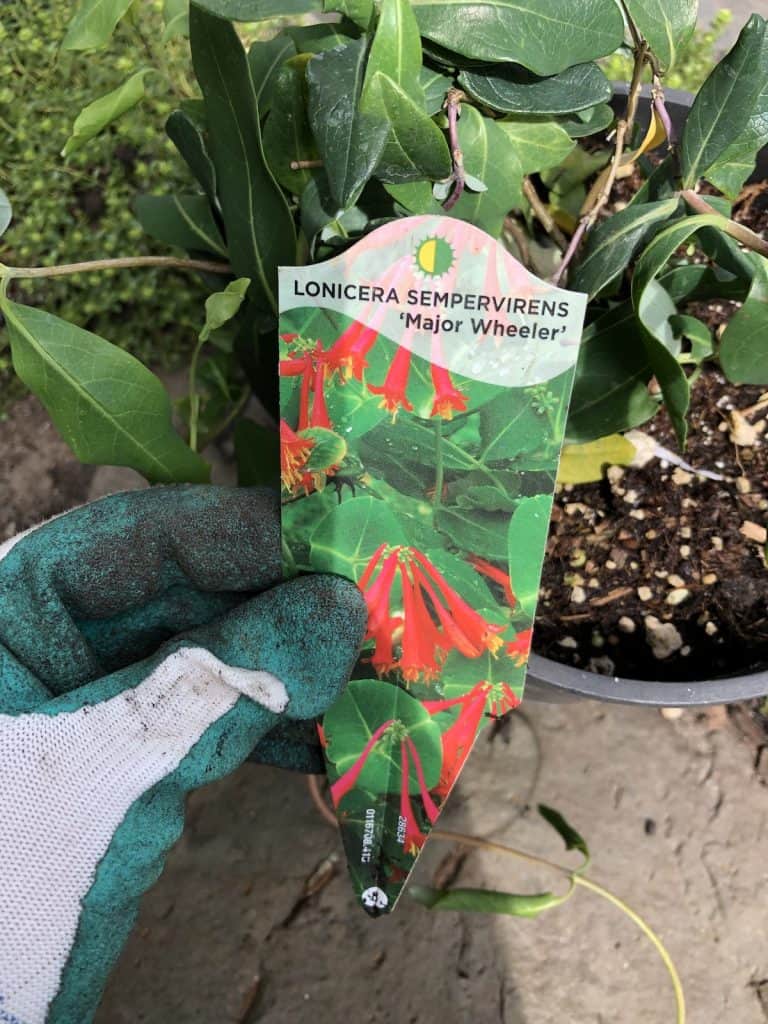
Discovery of the Major Wheeler honeysuckle
The “Major Wheeler” coral honeysuckle is a USA-native coral honeysuckle specimen discovered in the late 1980s along the coast of North Carolina by Patricia Wheeler. This cultivar is named after her husband Charles Wheeler, who was president of the North Carolina Botanical Garden Foundation.
“This cultivar is named after Charles L. Wheeler, who was president of the North Carolina Botanical Garden Foundation from 1988 to 1991. He was a retired major in the US Air Force.”
Wendy Wenck, North Carolina Botanical Garden, The University of North Carolina
Ken Moore, a former assistant director for the North Carolina Botanical Garden, wrote a wonderful column in a local NC weekly newspaper about how this cultivar was discovered. Here is an excerpt:
“Back in the late 1980s, keen Raleigh gardeners Pat and Charles Wheeler were driving along Salter Path Road on Emerald Isle. Charles was surprised when Pat came to an abrupt stop and turned the car around to take a closer look at a high sand dune construction site where she, being the wildflower nut she still is, had spied a mound of red flowers.”
Botanical surprises on the beach dunes, by Ken Moore. The Carrboro Citizen (2010).
Planting a Major Wheeler honeysuckle
Planting a Major Wheeler honeysuckle starts with selecting the right location. Choose a planting spot with well-drained soil that can be watered frequently. These vines really do flower best in full-sun locations (at least 6-8 hours of direct sun). That being said, a bit of shade around the stem and root area can help conserve moisture/stabilize soil moisture levels on hot days. This plant is perennial in zones 4-8.
Keep the Major Wheeler honeysuckle well-watered in its planter pot after purchase. Dig a hole for the honeysuckle plant that is the same depth as the soil in the nursery planter pot. Try to dig a hole that’s about twice as wide as the pot (the hole should be wide, but not deep). Water well after planting, consider installing drip irrigation and cover the soil with an organic mulch.
In a garden setting, the Major Wheeler honeysuckle grows best on a support trellis. Grow this climbing vine up a wire trellis, pole, fence, obelisk, or other pretty vine support. Young stems can be tied to the trellis with twine or coated tomato wire. The thin stems like to have lots of little places to attach themselves and grow particularly well on rough wooden trellis structures and wire or plastic mesh.
“Of the non-clinging native climbers you can choose from, honeysuckle probably gives the best value. It climbs by twining its stems around the support, and may need a bit of tying at first, until it gets the idea. There is no more dreamy perfume on a June evening, and by growing it against a wall you can bury your nose right in among the blossoms.”
Companion to Wildlife Gardening, Royal Horticultural Society, by Chris Baines
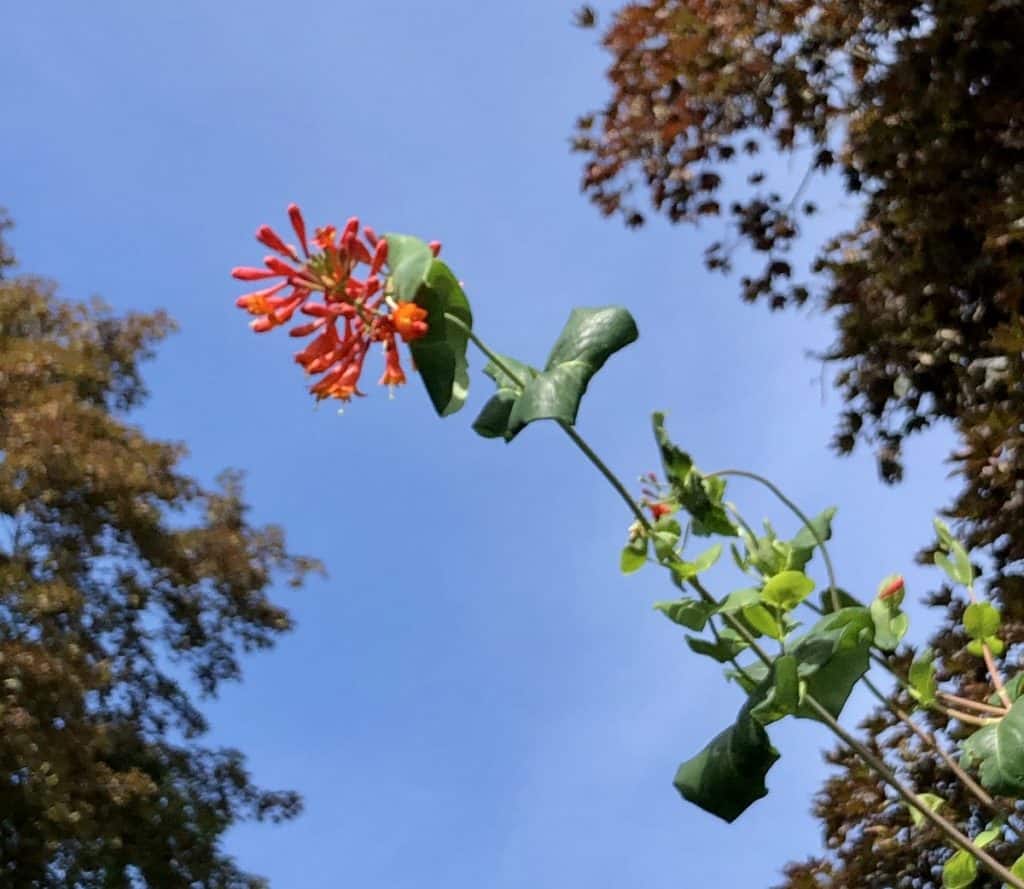
Pruning Major Wheeler honeysuckle
Coral honeysuckles, including Major Wheeler, require only light pruning during the first few years. Remove any vines that are dead, dying, diseased, or damaged as soon as they are observed. Other than that, focus on training the vine into its desired shape. Most mature plants grow to an over vine length of 6′-10′ (although there is some variation).
Maintenance pruning may be required on older vines of a Major Wheeler coral honeysuckle. Trim back any vines that are becoming too long for their support structure, or otherwise don’t fit the desired shape. Woody stems can be cut right back to the ground, as long as only about a maximum of 1/3 of the vines are removed in the course of one year.
Pollinator value of Major Wheeler honeysuckle (Lonicera)
Major Wheeler Honeysuckle (Lonicera) is a major attractant to butterflies, bees, and hummingbirds. As a USA-native plant, this climbing vine is an important nectar source for pollinators. The tubular red blooms will become one of the most popular hummingbird flowers in your neighborhood! They also make a beautiful addition to any hummingbird gardens that you create!
Lonicera sempervirens flower first on the previous year’s growth. Flower buds grow in autumn and remain dormant over winter, blooming in spring. For the most abundant blooming, prune this honeysuckle right after the big springtime show of blooms. Removing spent flowers encourages the vine to set new flower buds and continue blooming throughout summer.
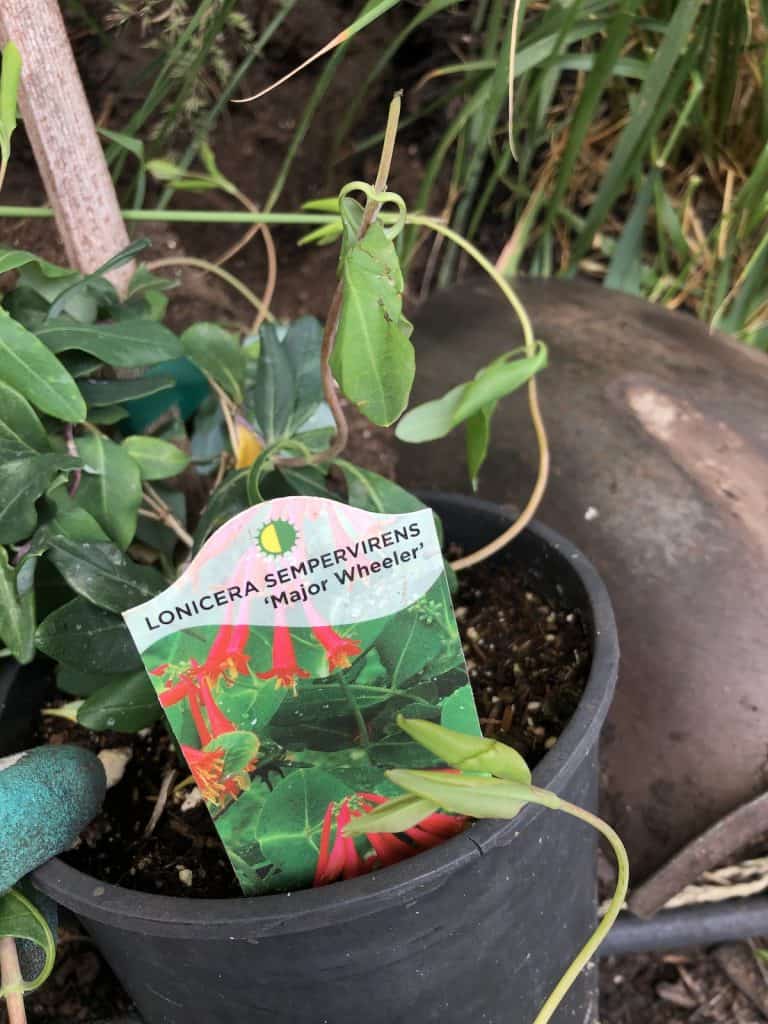
More questions
Is Major Wheeler honeysuckle invasive? The Major Wheeler honeysuckle is not generally considered invasive. Discovered in North Carolina, this plant can adapt to climates in Zones 4-8 but rarely becomes aggressive. This is a frequent choice of those looking for a native honeysuckle instead of an imported cultivar.
Does honeysuckle need sun or shade? Honeysuckle flowers are best when the leaves have access to lots of sun. At least 6-8 of direct sunlight a day is ideal. Honeysuckles grown in shade may not flower well. In especially hot climates, a bit of shade around the root area of the plant may help conserve moisture.
How fast does Major Wheeler honeysuckle grow? Major Wheeler honeysuckle is a medium-fast growing vine. This plant grows vigorously with ample sunlight, soil moisture, and soil nutrients. It may grow as fast as 1′-2′ per year in ideal conditions, and may even flower the first year it is planted.
How do you care for a honeysuckle ‘Major Wheeler’? Care for a Major Wheeler honeysuckle consists mainly of keeping the soil consistently moist (not dry, not muddy) and of training the vines up a support structure (generally by tying them onto it). More established vines need less attention, requiring intermittent watering and perhaps the odd bit of maintenance pruning.
Is ‘Major Wheeler’ Honeysuckle annual or perennial? Coral honeysuckles, such as ‘Major Wheeler’ are perennial plants in their native climate, meaning that this plant can survive cold winters (hardy in Zones 4-8.) and live for many years.
What do American Honeysuckle flowers smell like? The flowers of Lonicera sempervirens are relatively scentless, especially in comparison to honeysuckles native to Europe and Asia.


